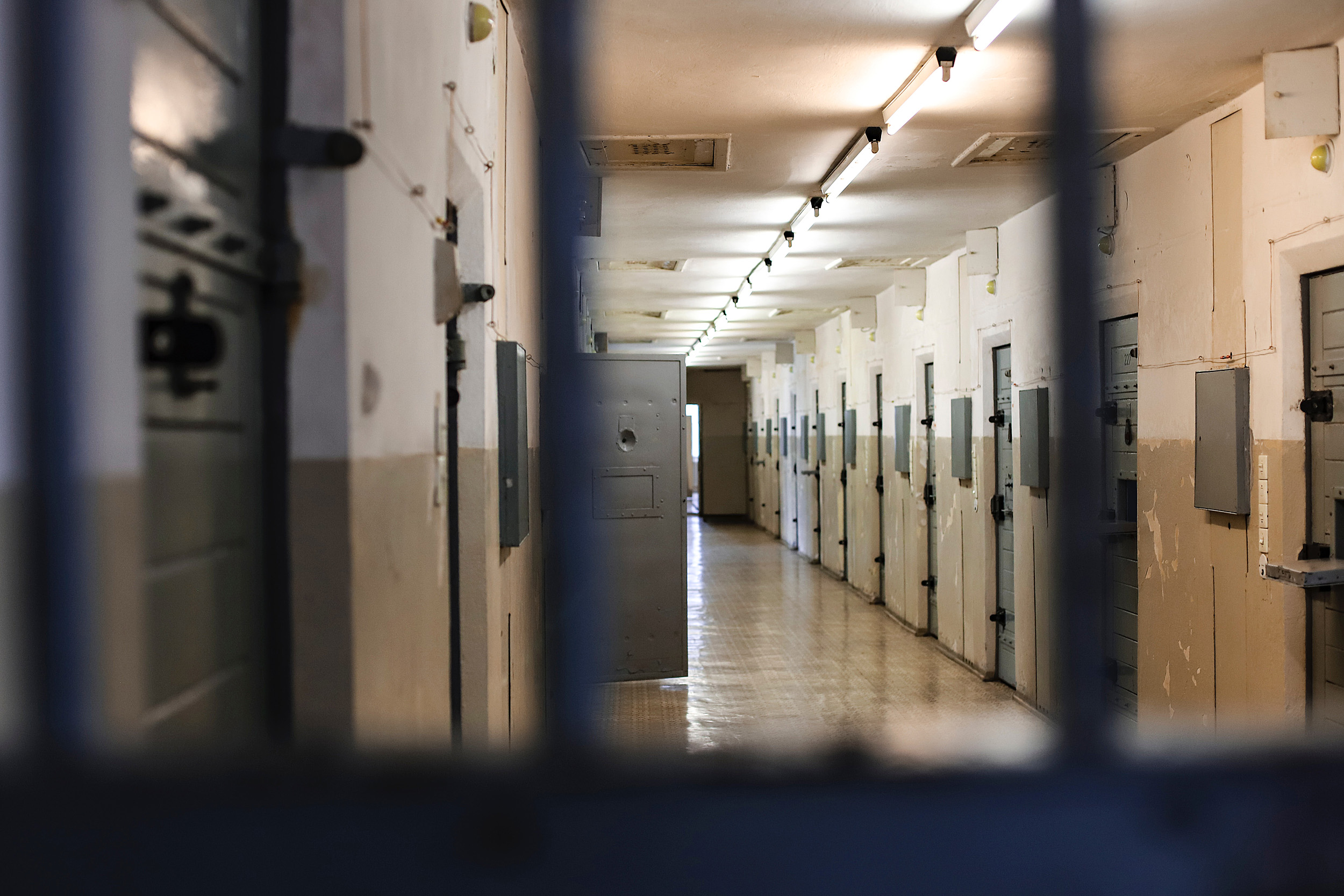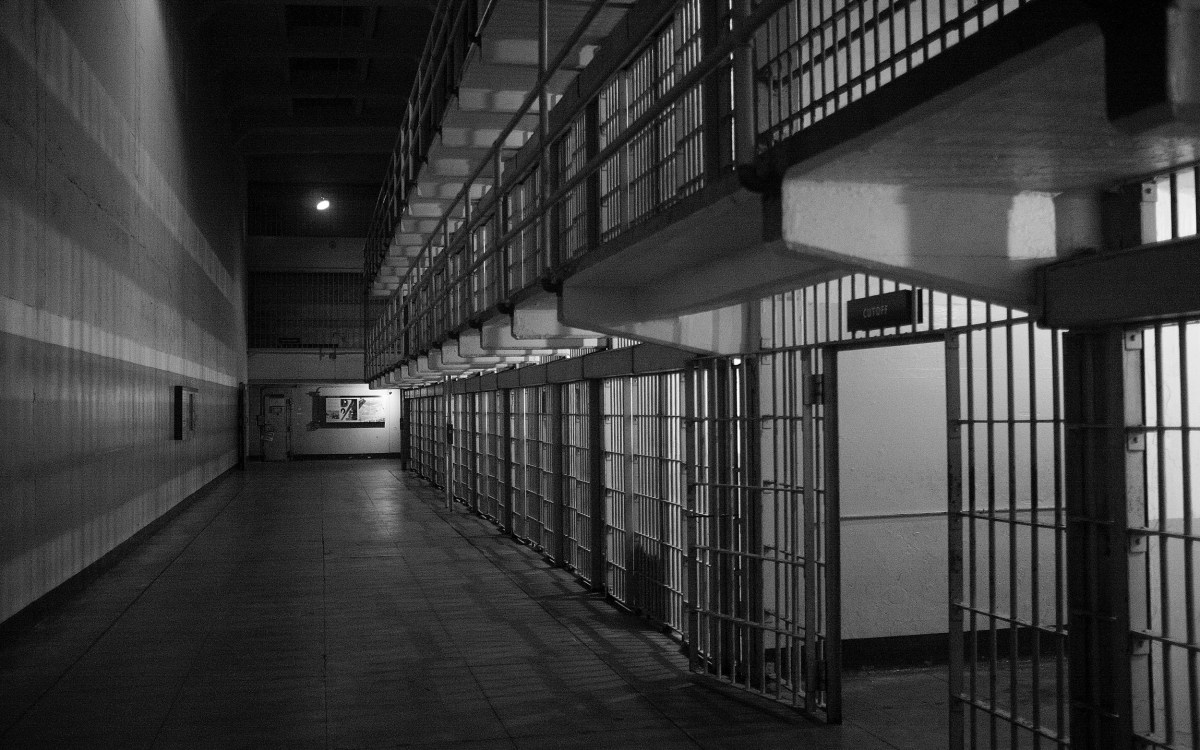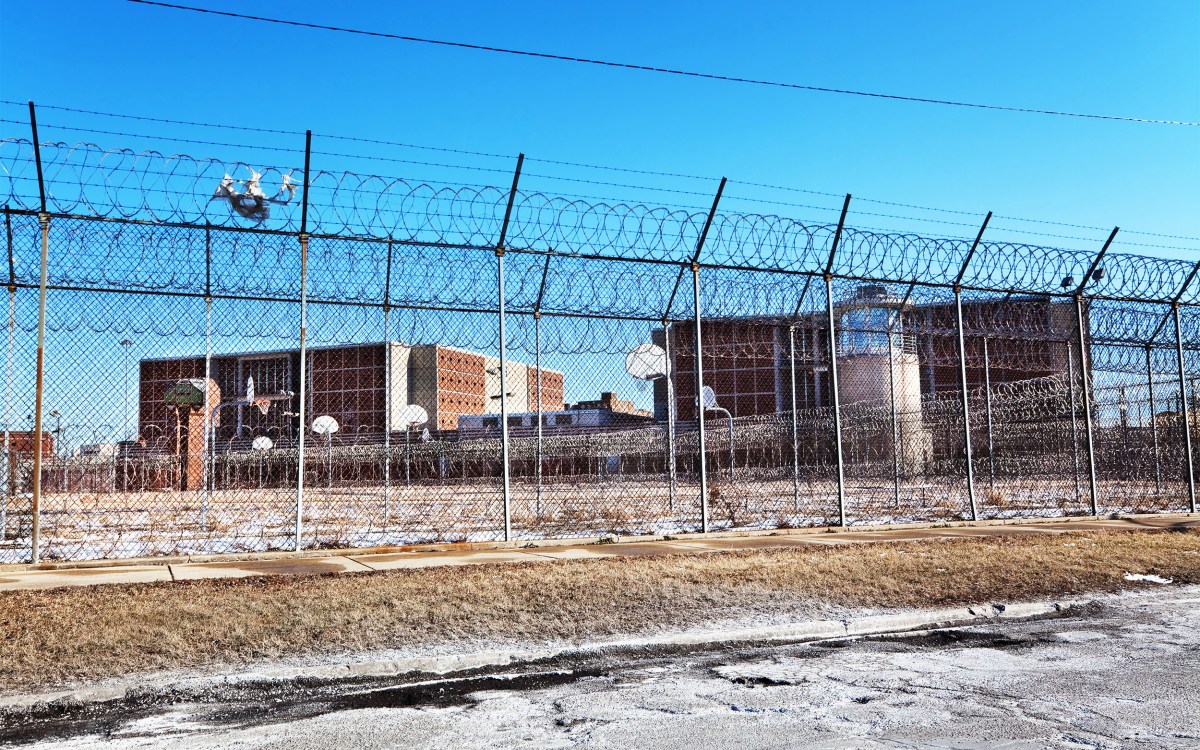
Matthew Ansley/Unsplash
Study suggests new lessons on COVID-19 and mass incarceration
Follow-up research links Ill. county jail with community spread of coronavirus
Results of a new study by Harvard researchers on the connections between a county jail in Chicago and the spread of COVID-19 in surrounding areas are offering lessons on pandemic preparedness and providing another argument against mass incarceration.
The study, by Eric Reinhart ’10, a Ph.D. candidate specializing in anthropology, and Daniel Chen ’99, J.D. ’09, a professor at the Toulouse School of Economics and a principal investigator for the World Bank’s Data and Evidence for Justice Reform program, was published in the journal Proceedings of the National Academy of Sciences. Their research is based on booking, release, and COVID-19 data from the Cook County Jail and disease numbers reported by the City of Chicago. It found that cycling individuals through the facility in March 2020 alone accounted for 13 percent of all COVID-19 cases and 21 percent of racial COVID-19 disparities in Chicago as of early August. This new study builds on research they published in June of 2020.
The authors conclude that detention facilities across the nation may significantly contribute to the racial disparities surrounding COVID-19 by broadening community spread of the novel coronavirus. “Our data suggest that jails function as infectious disease multipliers and epidemiological pumps that are especially affecting marginalized communities,” the authors write.
“Everybody has speculated as to why we have such marked racial disparities in COVID-19 cases and deaths, and there are many intersecting reasons for it. They’re all manifestations of various disadvantages, from housing to subjection to criminal punishment, poverty, poor working conditions, poor school conditions,” said Reinhart, “but policymakers have not been talking about how mass incarceration fuels these harms.”


Co-authors of the study, Eric Reinhart and Daniel Chen.
Photos courtesy of Eric Reinhart and Daniel Chen
Similar to their first study, the authors compared inmate release data from the Cook County Jail with rates of COVID-19 in Chicago ZIP codes, controlling for other possible causes including proportion of Black residents, proportion of Hispanic residents, poverty, public transit use, population density, and cumulative COVID-19 case rates as of the week beginning March 29. Reinhart and Chen found that, for each arrested individual cycled through Cook County Jail in March 2020, five additional cases of COVID-19 in their ZIP code of residence were independently attributable to the jail as of August. The work builds on their 2020 research published in Health Affairs, which found similar correlations between jail-cycling — the arrest and processing of individuals through jails prior to release — and the spread of the virus, particularly in communities of color.
Officials from the Cook County sheriff’s office have maintained that the findings were inaccurate, writing in a statement released in March that “[if] we had the ability to test at intake beginning in January it would have shown the virus was coming in from the street, not the other way around.” In response to the researchers’ most recent paper, they told the Chicago Tribune that “Mr. Reinhart’s baseless and irresponsible conclusion stands in stark contrast to the independent findings of the CDC, Yale, and Stanford Universities who concluded the practices implemented at the Cook County Jail to contain the global pandemic collectively served as a model for other carceral facilities to follow and prevented thousands of cases and saved dozens of lives.”
Reinhart, who conducted some of his new research with support from Harvard Radcliffe Institute’s Radcliffe Engaged Student Grant, said he was driven to follow up on the original paper because of the new availability of longitudinal data, which allowed them to observe the same variables over a period of time. He also wanted to respond to the sheriff’s office’s claim of “reverse causality,” the idea that the virus was actually brought into the jail by people from areas of the city with high infection rates and that the jail did not worsen the situation in surrounding areas, which Reinhart says their original study was unable to rule out. “By just looking at one point in time you might just be reflecting the fact that there are higher numbers of cases in those ZIP codes independent of any contribution from the jail … and we didn’t previously have the data to address that stated limitation of our initial study.”
The new study notes that cycling of individuals through the Cook County Jail in March 2020 was significantly correlated with COVID-19 case rates in Chicago ZIP codes beginning April 19, 2020, becoming largest the week starting April 26 and then gradually declining, yet remaining significant, until the week starting June 14. While Reinhart acknowledges that causality can only be definitively established with a “randomized controlled trial,” the additional data “strongly suggests reverse causality does not appear to be driving the phenomena we observe in our results.”
“You can’t address racial health disparities during or after COVID without addressing their sources, and one of the biggest sources in this country is the carceral system.”
Eric Reinhart
“Yes, of course the virus comes in from outside. That is the starting point for the dynamic we document and doesn’t at all undermine our findings,” Reinhart said, noting that he had previously witnessed large groups of people crowded into the jail’s enclosed rooms waiting to be processed during intake — scenes that served as the original motivation for this research when the pandemic began. “The issue is that when the virus is brought into a jail, unlike it spreading from one person who comes into my home and infects only me, it now multiplies a lot faster.”
“By the time the processing alone is done, and before you even get to the cellblocks, you’re going to have a lot of people who have been exposed, and a lot of people who days later are going to be infectious,” he said. “And many of them may never even know that they have been infected because they’ll be released before they will test positive, due to the necessary incubation period before new infections show up on tests; so this remains a problem even late in the pandemic when we have more testing capacity.”
The new research includes weekly COVID rates in the Chicago ZIP codes as well as a set of “more robust controls,” Reinhart said, such as more specific metrics involving levels of poverty, as well as more detailed information on housing and employment rates. “We find that our results, in which we were quite confident in the first case, held up. And moreover, that the number of cases attributed to jail cycling over time, unsurprisingly, grows.
“If we could trace this at the individual level, not just the ZIP code level, then the proportion of racial disparities accounted for by jail-linked COVID cases would almost certainly be significantly higher than we have been able to show,” said Reinhart, whose article “How Mass Incarceration Makes Us All Sick” recently appeared in the health-care journal Health Affairs. “You can’t address racial health disparities during or after COVID without addressing their sources, and one of the biggest sources in this country is the carceral system.”







